By the time October rolls around, your garden may begin to look a little bit of a mess due to dying leaves, collapsing plants and empty borders. However, this is the perfect opportunity to begin cutting back and tidying up. Autumn is most definitely and officially with us, in all its golden glory. The ground is wet with dew in the mornings and the garden starting to be covered in cobwebs, but some days into the month will feel glorious and still warm. On top of regular tasks such as keeping your lawn tidy and plants cut back, there is also a collection of jobs to ensure your garden is prepared for frosts as winter approaches. So, try and complete as many maintenance tasks as you can before moving on to the rest of this month’s gardening jobs. Preparation for winter is in full swing – fruit and autumn veg are starting to be ready to be brought in and stored, and plants should be cut back, wrapped up or brought inside to help them survive the chilly winter temperatures.
1. Spring bulbs – plant, plant and plant again
A welcome addition to any garden, spring flowering bulbs require little work and maintenance yet produce fabulous stunning early season displays. The good news is there’s still time to get the bulbs in the ground.
The unmistakable swathes of stunning daffodils and the beautifully vibrant colours of crocus, iris, tulips and other bulbs bring to gardens in the spring may seem miles away at this time of year, however, if you are looking to add or create a new spring display now is the time to plant.
Bulb planting is straight forward and easy even for the most novice gardener. When planting out always plant in groups, minimum of six to nine bulbs per group to give more impact and a better show, increase quantities if a larger area. For the correct spacing, plant bulbs twice the width of the bulb apart at the depth of two to three times the depth of the bulb with the shoot facing upwards.
Bulbs are a super choice for containers and easy to grow, again best planted in groups but may need to be smaller depending on container size, using a mix of multipurpose compost and grit with plenty of drainage when potting up. Recommended bulbs for containers include compact varieties of daffodils, tulips, iris and muscari. Some bulbs such as the delicate snowdrops perform much better when pot grown, once establish in the pot they can be transferred into the ground or divided and re-potted.
The fabulous early season splendour and colour camellia and rhododendron bring to many gardens take the plants many months to prepare.
Next season’s flower buds start to form very early at the end of summer and enter autumn, the bud development will be well under way. To ensure continued healthy growth and development of flower buds it is crucial the plant is kept well-watered.
Early October can often be fine and dry so it’s important to make sure the root system remains moist and well-watered (not over watered) helping the buds to swell and grow. Always water around the base of the shrub, both have dense foliage and if watered from the top water can be diverted away from the base by the foliage, meaning insufficient water reaches the root of the plant causing it dry out. Failing to look after them during the crucial autumn period may result in buds drying out and dying, putting at risk the much-anticipated spring extravaganza.
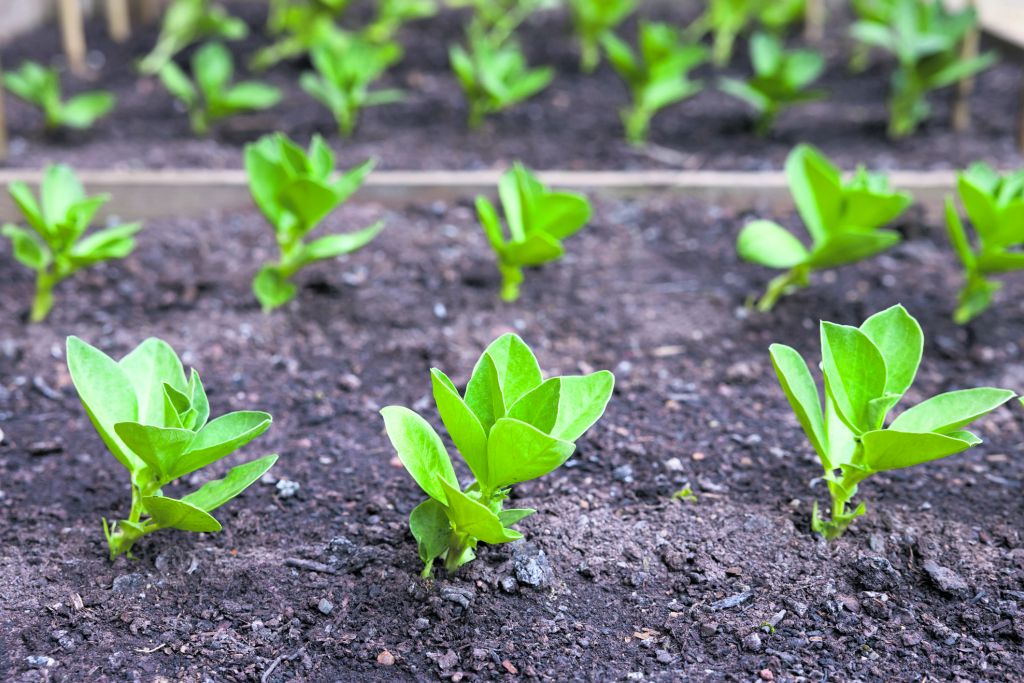
2. Autumn sowed broad beans now popular
Broad beans are very hardy and some broad bean varieties produce much earlier crops if sown in the autumn and certainly in October. On heavy soils that stay wet through the winter they can be prone to damping off or rotting. So, it can be a good idea to start them off in pots in the greenhouse and plant them out in the early spring as the soil warms up again.
You need hardy varieties such as ‘Aquadulce Claudia’ to make the most of over-wintering.
3. Bring tender plants under protection
If you’ve got tender plants, such as canna, now’s the time to bring them indoors before they get killed by the frost.
Choose a light, frost-free place such as a greenhouse or coldframe. Then keep them on the dry side during the winter, so they don’t put on much growth.
The plants can then be brought back into growth in spring by gradually increasing the amount of water they receive.
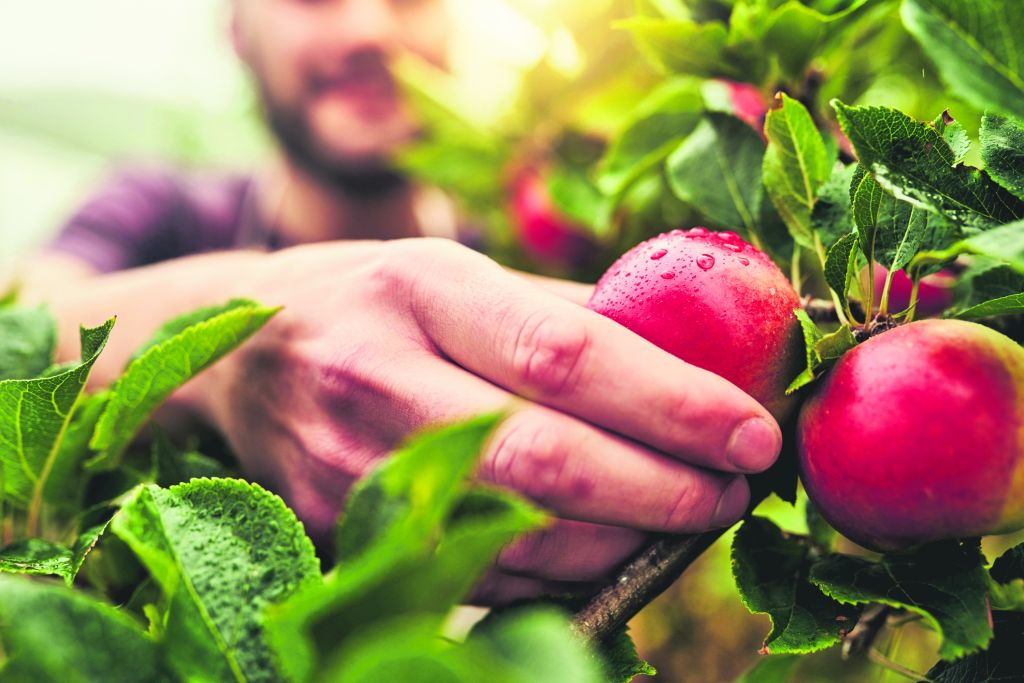
4. Last chance to harvest fruit
October sees the last chance to harvest late season fruit such as apples, pears, medlars and autumn raspberries.
It’s important to pick before the cooler wetter weather arrives later in the month spoiling what’s left of the crop. With a gentle twist ripened fruit will come any from the tree quite easily. Wasps usually feed on the sugary spit produced by larvae in the nest, however there will be no larvae left at this time of year and the wasps will be looking elsewhere for their sugar fix, fruit trees being their perfect source.
Remove any rotten and diseased fruit from the tree to help control and stop the spread of disease, it’s important leaves and fallen fruit are raked up to again help with disease control. Take off any unripened fruit by the end of October, the weather at this stage of the season will be too cold for fruit to ripen. Leaving the unripened fruit on trees will take valued energy out of the tree as well as leaving the tree open to disease.
Fruiting trees will have expelled huge amounts of energy through the growing season producing their fruit and will need a nutritional boost, however, now is not the time to do it. If fed now they would produce young tender growth, this growth would be damaged as soon as frost and cold weather arrives. Generally, fruit trees are best fed with high nitrogen feed in the spring giving the tree some well needed sustenance as the growing circle begins again.
Late season apples, if stored in a well ventilated frost free environment, will last well into November and December. Pears have a much shorter shelf life of around three weeks. If you have a glut of autumn raspberries and struggling to use up these can be frozen and used as and when required.
5. October and fruit tree planting
Late autumn and winter are the perfect time for planting trees and time especially to look to fruit trees. If you are dreaming of a new orchard, now is the time to start planning. A visit to one of the many apple days around the south and south-west is a great opportunity to try some of the less well-known varieties. Growing your own is a great opportunity to be able to grow one of the several thousand varieties that aren’t available in the shops.
6. Keep deadheading dahlias
Frosts will eventually bring an end to their glories but until then do keep deadheading. A quick way to tell flower bud from spent head: the spent heads are pointed in shape, the buds round.
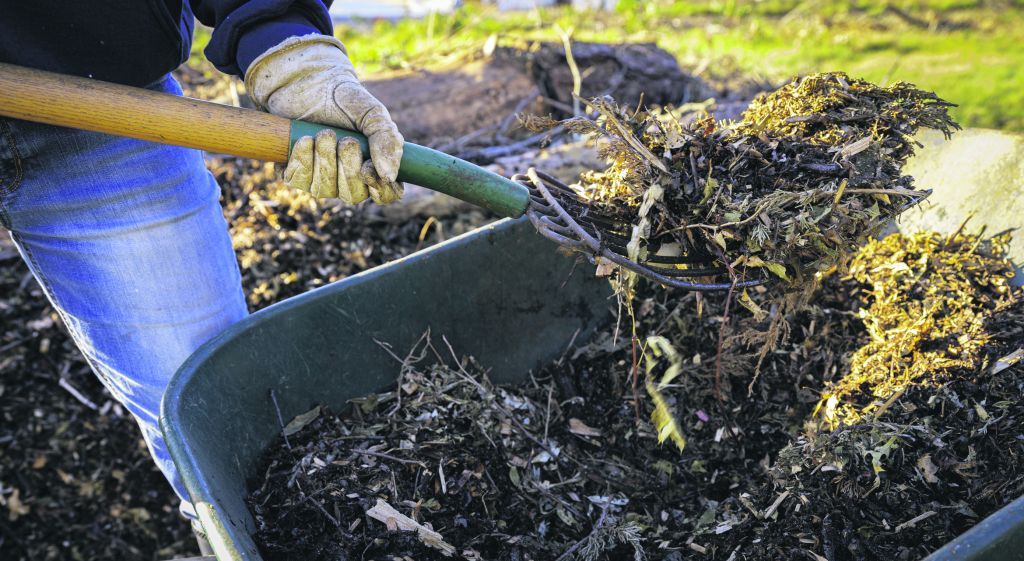
7. October is a great mulching month
If left over winter, the soil will lose nutrients. Use organic mulches to protect it and give good structure for next year’s growing season. Best mulches are a thick layer of autumn leaves, wetted so that they don’t blow away, straw, grass clippings and autumn leaves mixed together, cutback plants such as sweet peas, peas or runner beans, chopped up sheets of newspaper, covered with damp grass clippings to weigh it all down.
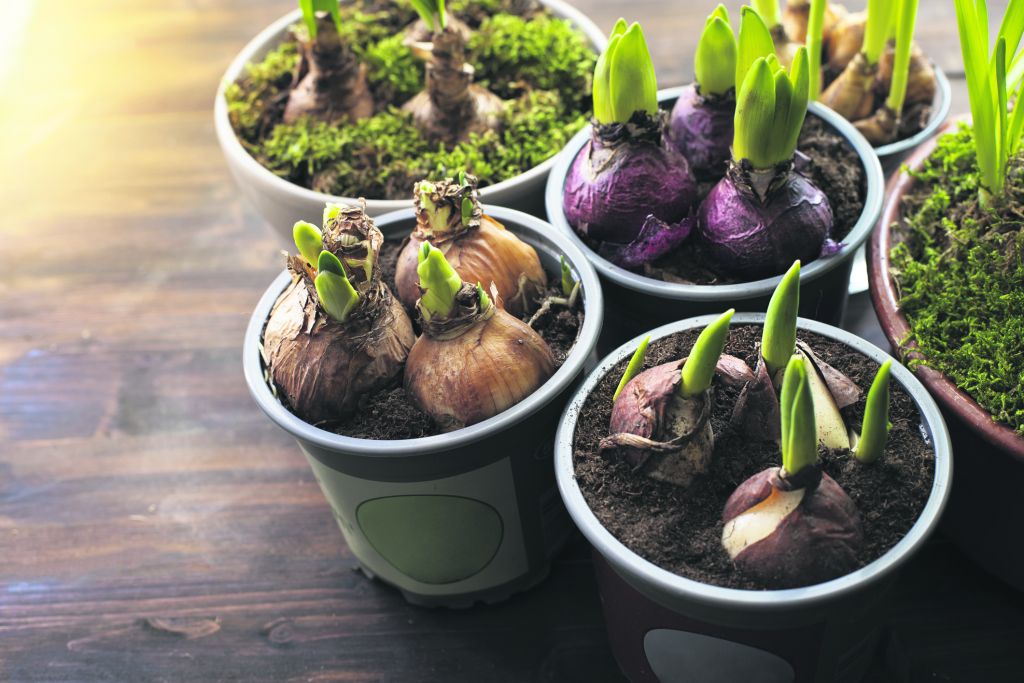
8. Get plants ready for Christmas
Prepared hyacinth bulbs can still be planted now. Use bulb fibre or general-purpose compost but don’t be tempted to use ordinary soil which might contain worms. Bulbs should be close but not touching either each other or the sides of the pot. Fill with compost allowing the tips of the bulbs to show. Water, but don’t overwater, and place in a cool dark cellar, garage or somewhere similar. Check regularly, watering a little if necessary. You don’t want them to dry out. Once the shoots are a couple of inches high you can bring the pots indoors.
9. Wildflowers need an October trim
Wildflowers only need to be cut down once a year. Wait until they have finished flowering and the seed heads have ripened, adjust the lawnmower wheels onto their highest setting, remove the grass collection box and run the mover over them, or if you fancy a lot of exercise, try a scythe. Leave the cuttings on the ground for a few days to allow any seed heads to dry and for the seeds to fall.
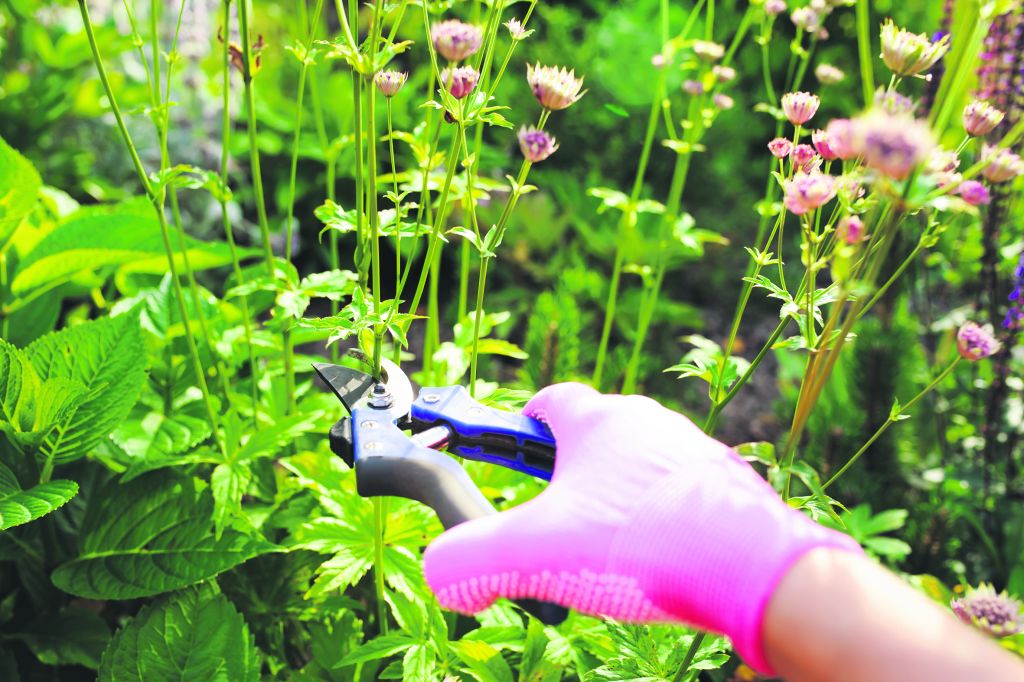
10. Cut back perennials that have died down
Perennials are not demanding plants, but trimming them after flowering finishes in autumn helps improve their appearance and flowering. But you can leave some stems over winter to provide homes and food for wildlife, and then trim back in spring.
Cutting back herbaceous plants during autumn restores order and tidiness to the garden. However, this removes potential winter interest, in the form of height and structure, plus food and habitat sources for wildlife so think about delaying the cut back until spring.

11. Time to give attention to your rhubarb
Rhubarb needs revitalising now and again. Dig up big old clumps and divide into pieces using a sharp spade, making sure that each division contains a piece of root and a shoot, then discard the old centre. This is also the time to buy and plant new rhubarb crowns.
Plant new crowns any time from now onwards through to the end of November.
On wetter soils, planting with the buds just raised out of the soil may help prevent rotting. of the plant. If planting more than one crown, space plants one metre apart, with one to two metres between rows.
12. Make the most of your fig tree
If you have a productive fig tree, take cuttings now. They should be about a foot long, this year’s growth, with the softer tip removed. Cut the tip-end at an angle so you know which end is up then insert cuttings into a trench of well-drained soil.

13. Garlic – the number one job in October
Late October is the ideal to plant garlic, because it needs a one-to-two-month cool period to encourage good bulb development before the spring.
To plant garlic, all you need to do is break up a bulb of garlic into segments/cloves, and plant them in well-drained soil, two cms below the soil’s surface. The flatter end (that you would normally trim off) should be pointing downwards. Try to choose a spot that’s open and well-lit to allow the garlic to receive maximum sunlight throughout the winter.
In terms of spacing, it’s best to allow 15cm between individual cloves and 30cm between each row of cloves. Garlic doesn’t do too well in an acidic soil environment (below pH of 6.5), but it’s easy to increase the pH of your soil by adding garden lime to it during the autumn and winter months.
14. Plant spring cabbage
It’s not too late to get your spring cabbage plants in the ground. ‘April’, ‘Durham Early’, ‘Offenham 2’, and ‘Spring Hero’ are varieties that you could try. Although they won’t grow much over the winter, they should flourish next spring.
You should space young cabbage plants as far as 18 inches apart, to give them plenty of space to grow. They’ll also need a good amount of water when they’re first planted. Cabbage plants are quite hardy, so they should be perfectly fine during the winter, unless it’s exceptionally cold. In this case, you might find it helpful to use a cloche (a cover) to protect them.
One of the main issues that young cabbage plants face is that they risk damage from pigeons. To counteract this problem, you can stick a couple of feathers into a potato and hang it from a string over your cabbage patch, to ward them off. The pigeons will think that your cabbages are being guarded by another bird and will usually keep away.












